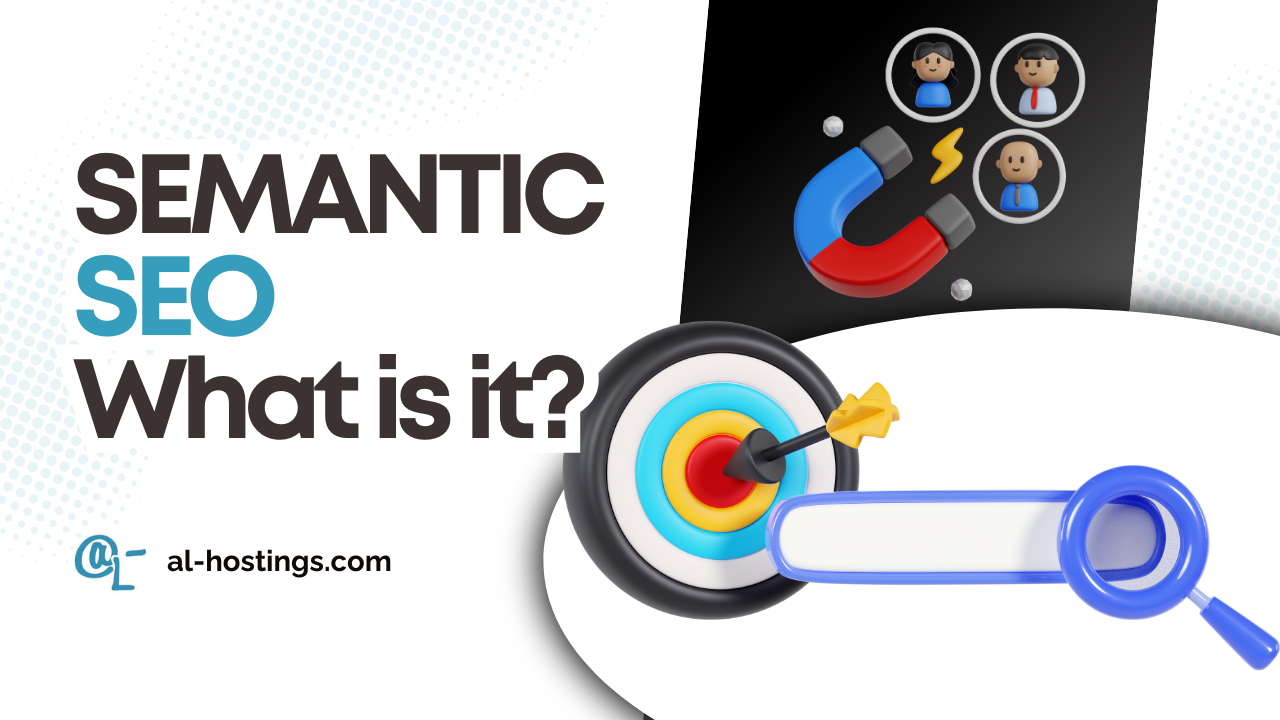Being on the first page of Google is the goal of many brands and businesses. However, to achieve this, it’s no longer enough to repeat a keyword a thousand times. Today, Google’s algorithm is smarter, and one of the factors that most influences ranking is semantic SEO.
Don’t know what it is or how to apply it to your website? Don’t worry, you’ve come to the right place. In this guide, I’ll explain what semantic SEO is, how it works, why you should use it, and how it can improve your rankings naturally and effectively.
Table of Contents
What is semantic SEO?
Semantic SEO is a web optimization strategy that focuses on the meaning of content, not just keywords. Instead of asking “How often does this keyword appear?”, Google now tries to understand the user’s search intent and whether the content addresses that intent.
This means you no longer need to write forced phrases like “best cheap leather shoes Barcelona”; instead, you can write naturally, responding to what your audience wants to know.
Quick example:
A traditional SEO-optimized article for “best web hosting” would repeat that phrase several times.
An article with semantic SEO would discuss hosting types, benefits, pricing, and choosing tips and include related terms like “web hosting,” “server,” “domain,” “fast loading,” etc.
Why is semantic SEO important today?
Because Google has evolved, and its algorithm is now based on artificial intelligence. Thanks to technologies like RankBrain and BERT, Google can better interpret what the user means, even if they don’t express it exactly.
This has several advantages:
-
It improves the user experience: The content is more natural, useful, and complete.
-
Increase time on page: Visitors find what they’re looking for.
-
Greater visibility in related searches: You don’t need to rely on just one exact keyword.
-
Improve your ranking without artificial tricks: Google rewards valuable content.
🧠 SEO Fact: Semantic SEO also helps you appear in Google’s featured snippets or rich results.
Differences between traditional SEO and semantic SEO
| Appearance | Traditional SEO | Semantic SEO |
|---|---|---|
| Focus | Exact keyword | Search intent |
| Keyword repetition | High | Moderate or natural |
| Language | Robotic and repetitive | Natural and conversational |
| Synonyms and variations | Avoided | Welcome |
| Content structure | Focused on technical SEO | Focused on user and context |
| Example | “buy cheap hosting” | “What hosting do I need for my website?” |
How to apply semantic SEO to your website
Here are a series of practical steps to help you start applying semantic SEO to your website or blog:
1. Research the search intent
Ask yourself: What does the user want when searching for this word? Are you looking for information, to buy, to compare, to resolve a question?
2. Use synonyms and related terms
Include secondary keywords that are related to your topic. For example, if you’re talking about “hosting,” also mention “web hosting,” “server,” “loading speed,” etc.
3. Answer frequently asked questions
Search engines greatly value your answers to questions like:
-
What is…?
-
What is… for?
-
How does it work…?
4. Use a clear structure
Include headings (H2, H3), lists, tables, and easy-to-read blocks of text. Google and users will appreciate it.
5. Link to relevant content
Both internal and external. This improves the content’s authority and helps contextualize it better.
🔗 Example of a relevant external link: Google’s guide to how search works
6. Use structured data (schema.org)
Although this is a bit more technical, you can use WordPress plugins like Yoast SEO that allow you to easily add semantic markup to your posts.
Useful tools for semantic SEO
Here are some tools that can help you work on semantic SEO effectively:
-
Answer the Public → Ideal for discovering real user questions.
-
Google Search Console → To see what queries you are appearing for.
-
Ahrefs → Research related keywords and analyze the competition.
-
LSI Graph → Find related semantic keywords.
-
Surfer SEO → Analyzes Google’s top content and gives you semantic recommendations.
Common Mistakes When Applying Semantic SEO
Although the concept seems simple, there are some common mistakes you should avoid:
❌ Sticking only with synonyms without understanding the search intent.
❌ Not delving deeper into the topic. Google values the quality and depth of content.
❌ Neglecting page structure (h1, h2, etc.).
❌ Not reviewing user behavior with tools like Google Analytics or Heat Maps.
Video What is Semantic SEO:
Conclusion: The future of web positioning
Semantic SEO is not just a fad. It’s the logical evolution of SEO in a world where search engines seek to understand, not just crawl.
If you want your website to stand out in the results, you need to speak the user’s language, not the robots’. The best part is that this approach not only positions you better, it also makes you more useful and relevant to your audience.
Do you have questions about how to apply semantic SEO to your project?
👉 Contact me and I’ll help you boost your online presence starting today.

WordPress Expert, SEO & UX Optimization | I help freelancers and SMEs grow their business. | Web Design and Development Specialist for Startups, SMEs, and Personal Projects




